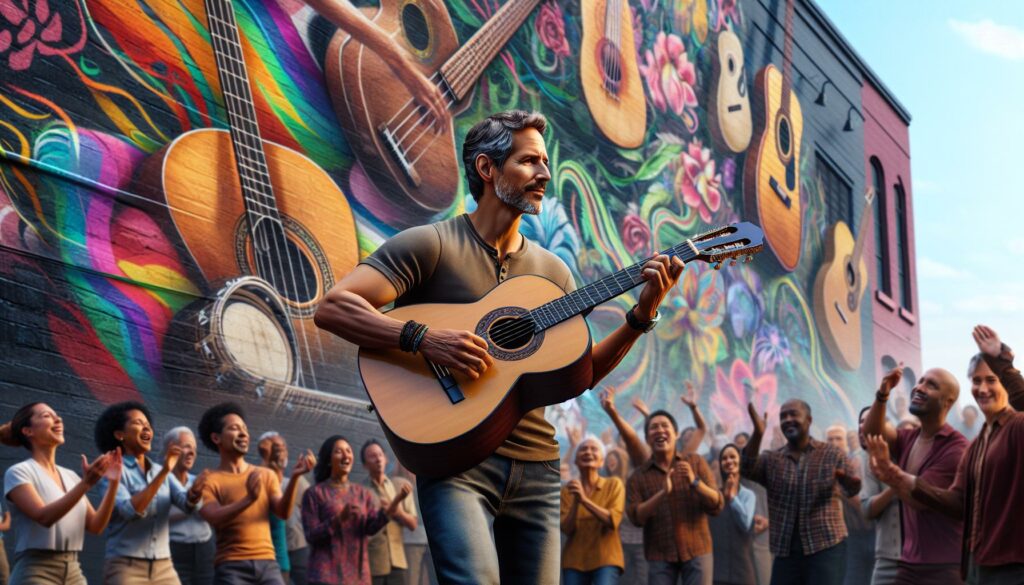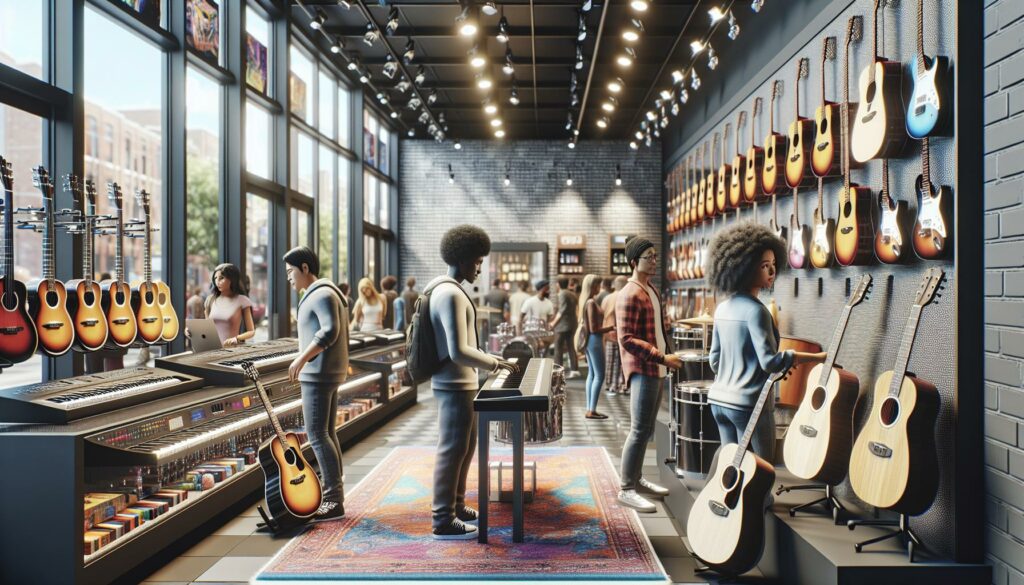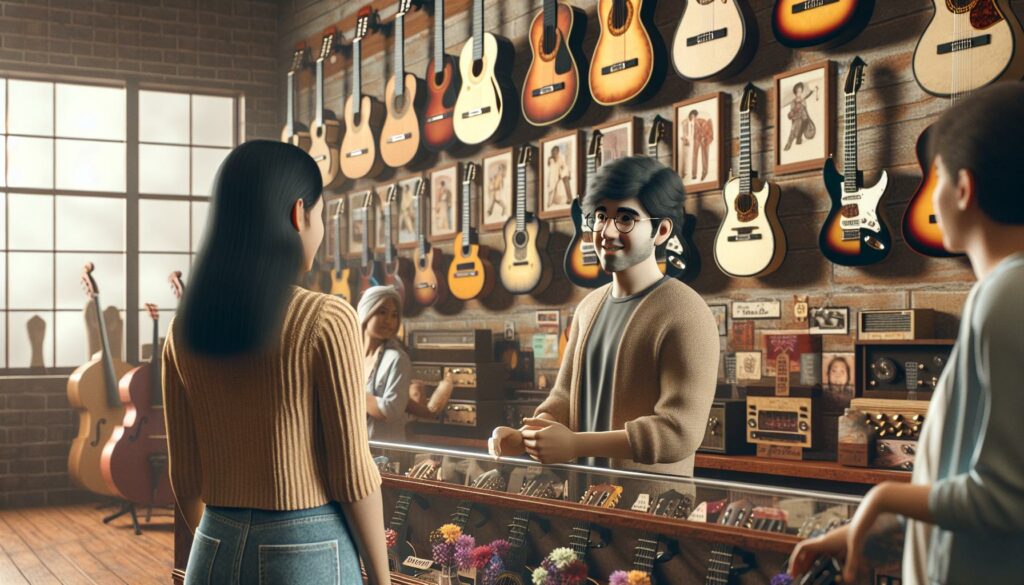”
I’ve always believed that music transcends borders languages and cultural boundaries. As a lifelong music enthusiast I’ve discovered that exploring global music opens up fascinating new worlds of sound that challenge and expand our musical horizons.
From the hypnotic rhythms of West African drums to the ethereal sounds of Japanese shakuhachi flutes music tells unique stories about people’s lives traditions and beliefs. I’ll take you on a journey through diverse musical landscapes where we’ll explore instruments melodies and rhythms that have shaped cultures for centuries. You’ll discover how different societies use music to celebrate mourn dance and connect with their spiritual beliefs.
Key Takeaways
- Music serves as a universal language that transcends cultural boundaries, connecting people through diverse rhythms, melodies, and instruments
- Traditional musical instruments reflect cultural values and technological capabilities, from African drums to Asian string instruments and indigenous wind instruments
- Sacred and ceremonial music plays vital roles in religious practices, life events, and social bonding across different societies worldwide
- Contemporary global music fusion combines traditional elements with modern technology, creating innovative cross-cultural collaborations and new sonic landscapes
- Digital preservation efforts, including high-quality recordings and online archives, help protect endangered musical traditions for future generations
- Educational initiatives, both online and in-person, ensure the transmission of traditional musical knowledge through structured programs and mentorship opportunities
World music traditions connect humanity through unique rhythms, melodies, and instruments across generations. These musical expressions carry the stories of civilizations and shape cultural identities.
Music from Around The World
Archaeological evidence reveals musical practices dating back 40,000 years through discoveries like bone flutes in Germany’s Hohle Fels cave. Ancient civilizations developed distinct musical systems:
- Mesopotamian cultures created the first written musical notation using cuneiform tablets
- Egyptian hieroglyphs depict harps, flutes, and percussion instruments from 3000 BCE
- Greek musical modes influenced modern Western scales and harmony theory
- Chinese imperial courts standardized pitch with bronze bells by 2000 BCE
- Religious Ceremonies: Sanskrit chants in Hindu temples, Islamic call to prayer, Gregorian chants
- Life Cycle Events: African coming-of-age ceremonies, Celtic wedding songs, Mexican quinceañeras
- Social Bonding: Caribbean steel pan gatherings, Irish pub sessions, Brazilian carnival celebrations
- Historical Records: Aboriginal Australian songlines, West African griots, Scandinavian folk ballads
| Region | Traditional Instrument | Age of Origin |
|---|---|---|
| India | Sitar | 700 CE |
| China | Guqin | 1000 BCE |
| Middle East | Oud | 3500 BCE |
| Africa | Talking Drum | 500 BCE |
| Americas | Teponaztli | 1300 CE |
Traditional Music Across Continents
Traditional music reflects distinct cultural identities through regional instruments, vocal techniques, and rhythmic patterns. Each continent’s musical heritage preserves centuries of cultural evolution through unique sound signatures.
Asian Musical Traditions
Asian music incorporates complex modal systems like Indian ragas and Chinese pentatonic scales. The traditional instruments include the Japanese koto (13-stringed zither), Korean gayageum (12-stringed zither) and Chinese guzheng (21-stringed zither). Classical Indian music features:
- Tabla drums for intricate rhythmic patterns
- Sitar with 18-23 strings for melodic expression
- Tambura providing continuous harmonic drone
- Bansuri bamboo flute for devotional music
African Rhythms and Sounds
African music emphasizes polyrhythmic patterns created through multiple percussion instruments. Traditional performances include:
- Djembe drums from West Africa for communal gatherings
- Talking drums that mimic tonal languages
- Mbira thumb piano for spiritual ceremonies
- Kora (21-string bridge harp) for storytelling
European Classical and Folk Music
European musical traditions blend sophisticated orchestral compositions with regional folk elements. Key characteristics include:
- Modal church music from medieval monasteries
- Celtic harps dating back to 800 CE
- Balkan tamburitza ensembles
- Alpine horn traditions from Switzerland
- Andean pan flutes (zampoñas) in mountain music
- Cuban tres guitar in son cubano
- Brazilian berimbau in capoeira rituals
- Mexican mariachi violins in folk songs
Musical Instruments Around the Globe
Ancient civilizations developed musical instruments that reflect their cultural values, technological capabilities and available materials. Each category of instruments contributes unique tonal qualities to global musical expression.
Percussion Instruments
Percussion instruments form the rhythmic foundation of music across cultures through striking, shaking or scraping. The West African djembe drum produces deep bass tones through goatskin stretched over carved hardwood. Indian tabla drums create complex rhythmic patterns using two hand drums with black tuning paste. The Indonesian gamelan orchestra features metallic percussion instruments like bronze gongs and metallophones tuned to specific scales.
String Instruments
String instruments showcase diverse construction methods and playing techniques worldwide. The Chinese guqin uses seven silk strings stretched across a wooden board to produce meditative tones through plucking techniques. Middle Eastern ouds feature short necks, bowl-shaped bodies and 11-13 strings played with a plectrum. The Indian sitar incorporates sympathetic strings that resonate when main strings vibrate, creating its characteristic drone.
Wind Instruments
Wind instruments demonstrate ingenious ways cultures shape sound through air vibration. The Australian Aboriginal didgeridoo produces deep drone tones through a hollowed eucalyptus branch up to 8 feet long. Andean pan flutes combine multiple bamboo tubes of varying lengths to create haunting melodies. The Japanese shakuhachi bamboo flute requires precise embouchure control to produce characteristic breathy tones in traditional zen music.
Modern Global Music Fusion
Contemporary music fusion blends traditional elements with modern sounds, creating innovative cross-cultural expressions. Digital technology enables seamless integration of diverse musical traditions, producing unique sonic landscapes that transcend geographical boundaries.
Cross-Cultural Collaborations
I’ve observed significant collaborations between artists from different musical traditions creating groundbreaking fusion genres. Yo-Yo Ma’s Silk Road Ensemble combines Chinese pipa with Persian kamancheh and Western classical instruments. Peter Gabriel’s WOMAD festival features cross-cultural performances like Afro Celt Sound System, merging Celtic melodies with West African rhythms. These collaborations preserve traditional elements while introducing:
- Electronic processing of traditional instruments
- Digital sampling of indigenous music
- Integration of ancient scales with modern harmonies
- Fusion of regional percussion with contemporary beats
- Multilingual lyrics in hybrid musical arrangements
World Music in Contemporary Times
Modern world music integrates traditional elements into contemporary popular genres through digital platforms and production techniques. Here’s how traditional music adapts to modern contexts:
| Platform Type | Impact on World Music | Example |
|---|---|---|
| Streaming Services | 500% increase in world music playlist creation since 2015 | Spotify’s Globalx |
| Social Media | 2.5B views of traditional music content on TikTok | #WorldMusic trend |
| Digital Distribution | 300% growth in independent world music releases | CD Baby World |
Key developments include:
- AI-powered music translation tools
- Virtual collaboration platforms
- Blockchain technology for fair artist compensation
- Mobile apps featuring traditional instrument sounds
- Cross-cultural music education programs
These innovations create authentic cultural exchanges while maintaining the integrity of traditional musical elements in contemporary settings.
Preserving Musical Heritage
Digital technology enables the preservation of traditional music through advanced recording methods and innovative teaching platforms. Cultural institutions document musical heritage while communities pass down traditions to future generations.
Digital Archives and Documentation
Modern archival techniques protect endangered musical traditions through high-quality audio recordings and detailed documentation. The British Library Sound Archive maintains 250,000 recordings of traditional music from 40 countries. International organizations like UNESCO’s Intangible Cultural Heritage program digitize historical recordings using 192kHz/24-bit audio standards. Online databases provide access to:
- Recorded performances of master musicians
- Field recordings from remote communities
- Oral histories about musical traditions
- Digital scans of ancient musical manuscripts
- 3D models of rare traditional instruments
Teaching Traditional Music
Educational initiatives transmit musical knowledge through structured programs and mentorship opportunities. Master musicians teach traditional techniques in:
- Formal music schools offering specialized degrees
- Community centers hosting weekly workshops
- Online platforms featuring video lessons
- Cultural festivals organizing hands-on workshops
- Intergenerational learning programs
The Smithsonian Folkways Music Academy connects 5,000 students annually with traditional music instructors through virtual classrooms. Local music schools integrate traditional instruments into their curricula, with 300 institutions worldwide offering dedicated programs in indigenous music studies.
| Teaching Format | Annual Student Reach | Growth Rate |
|---|---|---|
| Online Courses | 50,000+ | 25% |
| In-Person Classes | 15,000+ | 10% |
| Festival Workshops | 25,000+ | 15% |
| Virtual Mentoring | 10,000+ | 30% |
My exploration of global music traditions has shown me that music truly is humanity’s universal language. Through countless instruments rhythms and melodies I’ve discovered how music weaves together the stories of cultures across time and space.
I’ve learned that while technology helps preserve and share these musical traditions it’s the human connection that makes world music so powerful. From ancient ceremonial drums to modern digital collaborations music continues to bridge cultural gaps and unite people worldwide.
I believe that by embracing and celebrating musical diversity we’re not just preserving cultural heritage – we’re creating new paths for cultural understanding and artistic expression. The future of world music looks brighter than ever as traditional sounds blend with modern innovations.



